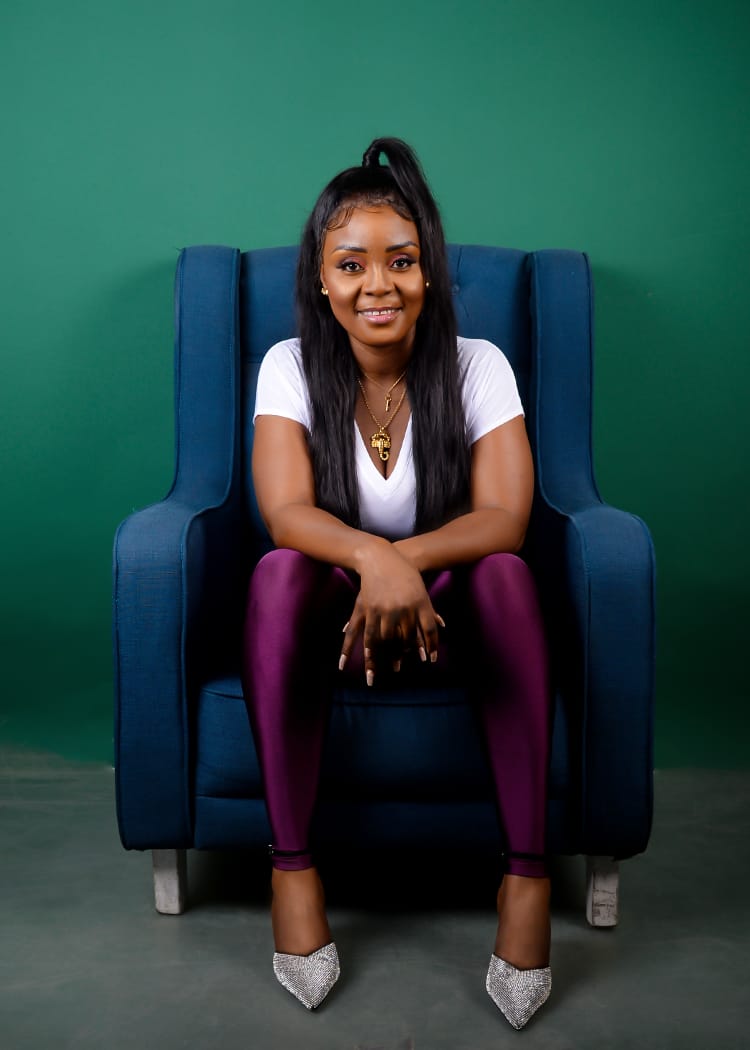
Fashion trends come and go; meanwhile a society’s values are established and evolving characteristic to their beliefs and culture. Fashion is just not an ambitious projected image of a reinterpreted good old value to fulfil some function or agenda alike but rather an evocative and refreshing concept worthy enough to be portrayed for society’s appreciation that makes us instinctive.
In society, the individual’s appearance is the ticket to transmit non-verbal communication signals such as possible cues about his or her social stature, values and lifestyle. Fashion communication has undergone a 360 degree shift in its communicable aspects starting from projecting a basic image of how we look like and how we feel like to expressing our emotional experiences through interactive implements in the dress.
Those were the sentiments shared by the multi-talented and enterprising fashion entrepreneur, Eunice Baaba Korsah, when we had lunch over the weekend to discuss the impact of fashion trends on a society. She is the proud owner and founder of Baafak Essentials, a business, which supplies garment, fashion accessories to boutiques across the country, and specialises in styling, corporate and interior décor as well as venue sourcing, event logistics and management.
According to Baaba, the success of the fashion trend lies in the way the society interprets the fashion trend and judges it. “The impact of fashion trends is measured by the barometer of social acceptance, which in turn is driven by the several motivational forces that underline the people’s values and behavioural traits. Today’s consumer culture is driven by aspiration, which diminishes the gap between the rich and economically volatile sections when it comes to accepting and adopting a trend. A classic example is a consumer saves her three months’ salary to purchase a LVMH handbag. Further, it does not stop here as people’s cash liquidity is extended by the easy provision of personal loans by friends and associates and sometimes facilitated by financial bodies. Also, this is even further extended by a few brands’ initiatives to offer fashion products on a credit basis with easy monthly part payment options”, she added.

She spoke about the essence of recognising a concept she described as the Face of Everyday Fashion. According to her, the phenomenon of fashion can be categorised into elite fashion (haute couture) and everyday fashion rather than just restricting ourselves to the concept of European or western high fashion. Everyday Fashion is an interactive process through which aspiring individuals of the society consciously project their bodily self in a distinctive manner in the form of clothing style.
It is unlike the traditional capitalist fashion system where the so-called elite or rich decide the course of fashion tastes and the fashion moves from the top to bottom sections of the society. This distinctive manner of style is equally drawn from the fashion trends percolated through contemporary life, style conventions, fashion code concepts developed by the designers and forecasting service providers alike and street style fashion.
Relating the beliefs and attitudes of the people of a social group in drawing a fine line between the existing patterns of style and their appearance by dressing in a trendy manner, she indicated that the intention is to win friends or draw appreciations by communicating their values in the form of dress and clothing, which is a social etiquette and effective form of nonverbal communication.
“The contemporary everyday fashion echoes a different pattern contrary to the traditional fashion cycle periods of Classic fashion and FAD, fashion considered harder to wear as they are not as flattering for the majority of people. Rather we can say there is a change in the compositions of the elements that constitute these fashion concepts”, she emphasised.
Commenting on the social agenda of fashion trends, Baaba indicated that clothing and fashion are carriers of a wide range of ideological meanings. Fashion trends portray a visual culture and style of dressing that models the consumer identity in a specific environment. In her opinion, the social agenda of these fashion trends is to express the consumer’s identity in terms of lifestyle choices and their attitude. However, lifestyle choices change from one period to another period.
According to her, pattern and manner of dressing befitting an occasion sets forth a standard and these clothing standards are in fact derived from the prevailing social values and their emotional expectations. There is a steady rise in the consumption of styles like waist trainer, jogger pants, palazzo pants, tulle skirt and midi skirt.
While styles like white lace dress, high waisted bikini, romper, shift dress and white jumpsuit have recorded seasonal growth, they have also added on a new element of Elegance and natural wellbeing to the contemporary human existence but have demystified few common fabric notions in the society like knitted stretch denim is suitable only for lounges and tulle is appropriate only for elegant party wear or Haute couture.
She further explained, “the agenda of each fashion trend is to enhance the look and feel of the customer. From the user search behaviour patterns, it is clearly evident that many fashion trends have bulldozed the issue of class entirely, and instead follow patterns of personal identity dictated by psychographic parameters based on age, race, gender, sexuality, leisure activities, and various sub-cultural allegiances. This is a classic example of how contemporary fashion cycles operate”.
In concluding our conversation, Baaba indicated that fashion communication, unlike verbal communication, messages transmitted through fashion symbols are often emotional impressions or illusions. In other words, they reflect the clothing attitude of the person. The perceiver examines a fashion statement not for a new message, but for an old one fixed by convention.
Fashion symbols and their effectiveness in communicating culturally defined categories while principles and processes emerged through human interaction and does not only speak about their existence but also their consciousness, differently from purely top-down models. Clothes are never a frivolity; they are always an expression of the fundamental social and economic pressures of the time.
(Source: Chris Koney)


